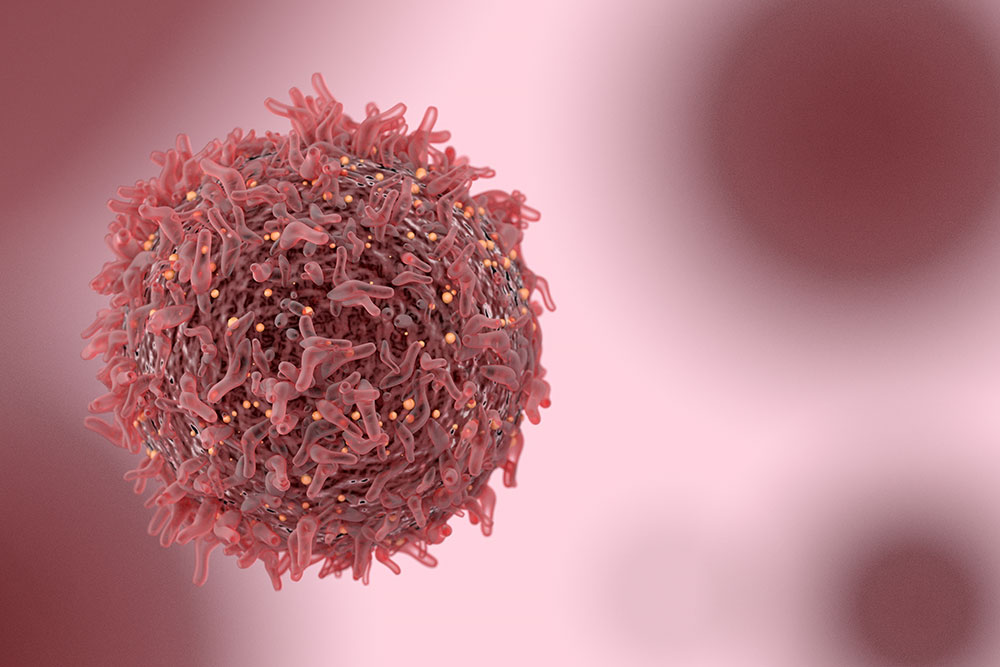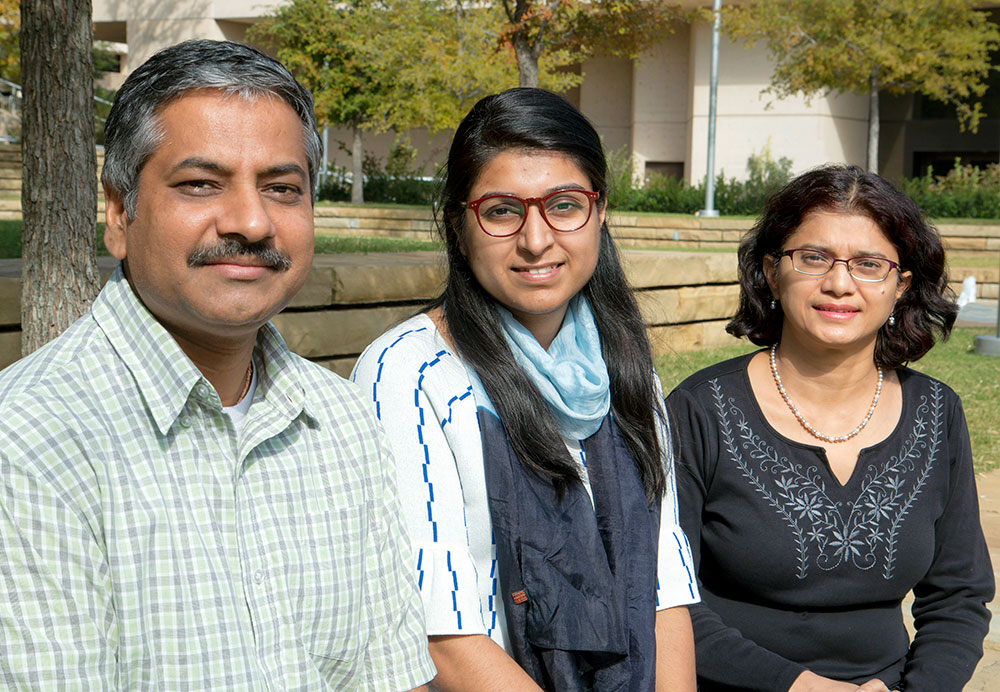
A cancerous cell is depicted in this illustration. About 1 in 8 women in the United States develop invasive breast cancer during their lives, according to the American Cancer Society. (Illustration/iStock)
Statisticians at The University of Texas at Dallas have developed an online tool to help breast cancer patients assess their risk of getting a second breast cancer, providing additional guidance for patients and their doctors in the timely management of the disease.
Dr. Swati Biswas, associate professor of statistics in the Department of Mathematical Sciences, has spent a major part of her career working on statistical models that shed light on who is most at risk for developing breast cancer.
Recently, Biswas collaborated with Dr. Pankaj Choudhary, professor of statistics, and their doctoral student Marzana Chowdhury to develop an assessment tool that provides breast cancer patients with their future risk of getting contralateral breast cancer — the development of cancer in the other, healthy breast over time. They worked closely on the project with Dr. David Euhus, director of breast surgery at Johns Hopkins School of Medicine, to incorporate multiple risk factors, such as breast density, family history, the type of breast cancer and age at first diagnosis.

From left: Dr. Pankaj Choudhary, doctoral student Marzana Chowdhury and Dr. Swati Biswas worked together to create an online tool that provides breast cancer patients with their future risk of getting contralateral breast cancer.
The tool, available in an online app, can help patients and their doctors determine the best course of action, such as whether to remove the healthy breast, Biswas said. The research, funded by the National Cancer Institute at the National Institutes of Health, was published earlier this year in the journal Breast Cancer Research and Treatment.
“One aspect of our model that is different from other tools is that we allow the risk factors to have an unknown category. If for some reason the patient does not know their breast density, for example, the model will still work. This feature enhances the usability of our tool,” Choudhary said. “Breast density is a fairly newly recognized risk factor, and typically has not been collected as standard data.”
The project is the focus of Chowdhury’s doctoral research. She is testing the assessment model using two large independent data sets.
“Marzana has done an amazing job on this research, and was critical to its success,” Biswas said. “This project is something where both statistical expertise and the insights of medical professionals were needed. It simply could not have happened without that combination.”
In the end, tests like those developed by Biswas and her colleagues can help ensure that women get the right amount of care when they need it.
“The importance of statistics sometimes becomes obscure to the general public. People think, ‘Oh, that’s math, what’s the use?’ But this project really shows the important role mathematics and statistics play in areas vital to our everyday lives. ”
Dr. Swati Biswas,
associate professor of statistics in
the School of Natural Sciences
and Mathematics
“Of course, we want to make sure that women who are at risk get the active surveillance they need,” Biswas said. “But we also want to help make sure that women who aren’t at risk aren’t getting unnecessary medical intervention.”
Choudhary said he expects the model will help educate patients and provide physicians with an additional quantitative tool.
“Not that long ago, doctors had to rely on their intuition to counsel their patients,” he said. “Our tool is not a replacement for a physician’s intuition or judgment, but it can help inform that judgment.”
The researchers said that developing the assessment tool has personally been a rewarding learning process that illustrates the underlying importance of mathematics and statistics beyond the classroom.
“This is one of my most impactful contributions to science and society,” Choudhary said. “For many academics, people already familiar with their field are the ones most likely to read their published papers. But if this model validates well, thousands of people could be helped.”
According to the American Cancer Society, about 1 in 8 women in the United States develop invasive breast cancer during their lives. Estimates show that more than 40,000 will die of the disease in 2017.
“The importance of statistics sometimes becomes obscure to the general public. People think, ‘Oh, that’s math, what’s the use?’” Biswas said. “But this project really shows the important role mathematics and statistics play in areas vital to our everyday lives.”